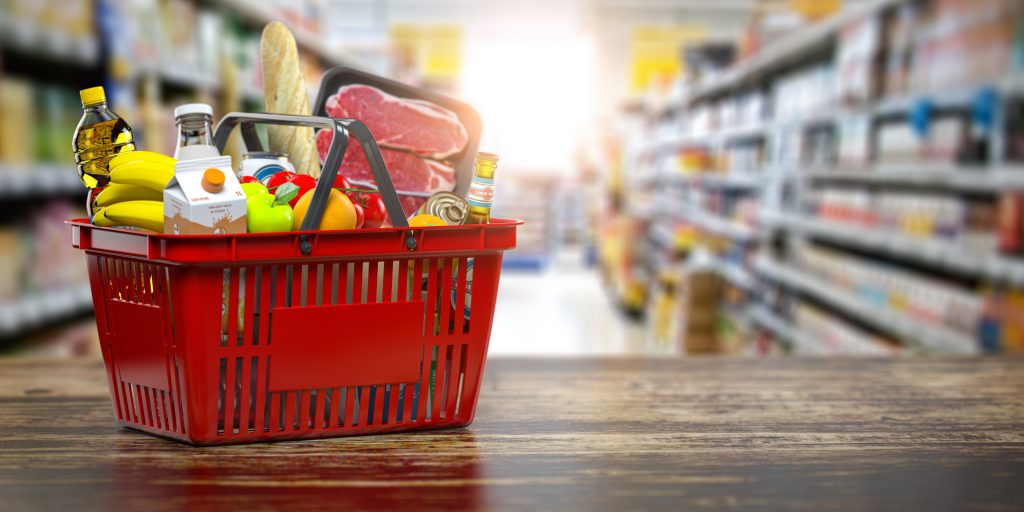We're dispelling the myths of industrial agriculture.
Welcome to our Big Ag Mythbusters blog series! We are here to debunk the tall tales that multinational corporations use to defend their business model and defeat any meaningful reforms. We’re publishing this series alongside our groundbreaking report titled “The Truth About Industrial Agriculture: A Fragile System Propped up by Myths and Hidden Costs.”
MYTH
Industrial agriculture is the only way to keep retail food prices affordable.
The Truth
For decades, a handful of monopoly corporations have held the world’s food supply hostage by insisting that their business model — which is based on the economic efficiency of large-scale, centralized production — is the only way to keep food prices affordable. Wielding billion-dollar ad campaigns and millions of dollars in lobbying, they have persuaded the public that an agriculture system that incentivizes locally-sourced food from smaller producers will drive up food prices and leave families hungry.
While an efficient, profitable supply chain sounds like a good thing, the absence of competition means there’s nothing to check the abuses produced by corporations’ tunnel vision for profits. This yields a system in which farmers don’t have anyone else to sell to, reducing the prices they are paid for their finished products to below-production costs, and consumers don’t have anyone else to buy from, leaving them vulnerable to price gouging.
In busting this myth, let’s start with the fact that food prices are not particularly affordable for a lot of Americans. Since 2000, general inflation has increased around 54%, but in the same timeframe, food prices have risen almost 60%, with red meat, poultry, and egg prices rising more than 70%. The difference is being pocketed by Big Ag.
Since 2000, general inflation has increased around 54%, while food prices have risen almost 60% — with red meat, poultry, and egg prices rising more than 70%.
This is how the system is designed: corporations selling food at higher prices and reaping record profits are doing everything right for their businesses. They are expected to return maximum profit for their shareholders. They are not at all obligated to pass the savings from their efficient production models on to consumers, pay farmers and ranchers more for quality products, protect their workers, or make food accessible to hungry Americans.
And let’s be clear: industrial agriculture has not resolved hunger in the United States. In fact, in 2019 one in nine American households — and one in seven households with children — were classified as “food insecure,” meaning they were at risk of not having enough food. Food insecurity has persisted in the U.S. even as 40% of the U.S. corn crop was converted to ethanol and agricultural policies promoted exports. If industrial agriculture is the only way to keep food affordable and accessible, why are so many people hungry?
The next thing to keep in mind is that the prices consumers pay in grocery stores or at restaurants aren’t dictated by supply, demand, or market competition. Many of the prices you see on the shelves are carefully calculated by the world’s biggest meatpackers and distributors (like JBS, Cargill, and Smithfield) who’ve discovered that if they work together, consumers will have no other choice than to pay higher prices.
What’s more, the historically-lax regulatory environment has enabled collusion among these corporations and others like them. Given any reason to raise prices — such as a COVID outbreak among plant workers — Big Ag has stoked fears to ensure those high prices stick for consumers, even after the initial issue is resolved.
If industrial agriculture is the only way to keep food affordable and accessible, why are so many people hungry?
Farmers and consumers alike suffer the consequences of this rigged and rigid system. When we buy food from an industrial agriculture corporation, each link in the supply chain — from farmers, to plant workers, to consumers — is being squeezed for maximum profit. Farmers’ share of every dollar that consumers spent on food hit a record-low 14.6 cents in 2019. Taxpayers help farmers scrape by while a handful of corporations buy up their livestock and crops for dirt-cheap prices. Even still, farmers are losing their land at alarming rates, and those contracting with corporations are required to take on mountains of debt to purchase contract-mandated buildings and equipment. To add insult to injury, most farmers with contracts don’t own the only thing that increases in value on a farm — the animals being raised.
The issue of affordability is compounded for rural communities, as proximity to farmland no longer means proximity to food: rural communities face food insecurity rates 4% higher than urban communities. Thanks to Big Ag’s rural industrial plants, rural communities are also saddled with polluted water, degraded land, toxic air, and higher medical bills. These are just a few of the messes that Big Ag will make, but refuse to pay for when it’s time to clean up.
Despite Big Ag’s big efforts to push this affordability myth, Americans are getting wise: 57% of voters want more oversight of industrial agriculture, and 51% of voters support a national moratorium on Concentrated Animal Feeding Operations (CAFOs) after learning about their environmental impacts.
So how do we overhaul this system that’s been effectively dominated by corporations who stand to gain the most?
We can start by taking away the loopholes and barriers that they’ve created to rig the market: give farmers back their rights under the Packers and Stockyards Act so they can fight abusive corporate practices. Require corporations to label the country their food is produced in so consumers can support their neighbors. Make corporations clean up their own messes, and fine them until it is no longer profitable to fix prices, gouge consumers, and settle the bill in court later.

We can only escape from this labyrinth of an unfair agriculture system when we expose the myths that hold it up: industrial agriculture is not the only way to produce affordable food. We can build a fair food system where consumer dollars reward hard work and good food, instead of lining corporate shareholders’ pockets. Respecting the land, workers, and all those who eat will not cost us more in the short term, and it will certainly save us in the long run.
Written by Anna Straus; designed by Dee Laninga; edited by Dee Laninga, Angela Huffman, Emily Miller, and Joe Maxwell; concept developed from “The Truth About Industrial Agriculture: A Fragile System Propped up by Myths and Hidden Costs” by Emily M. Miller.


